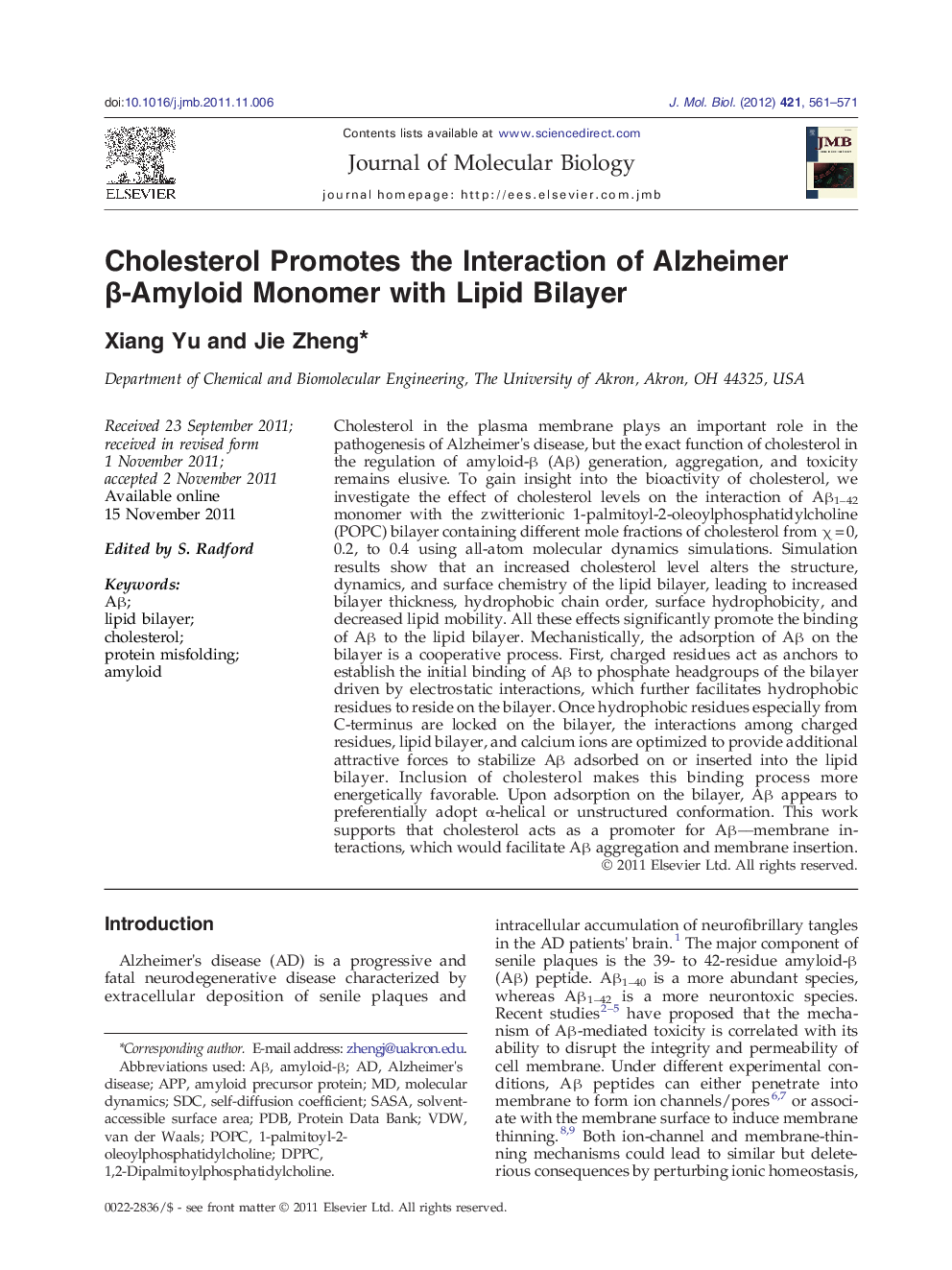| کد مقاله | کد نشریه | سال انتشار | مقاله انگلیسی | نسخه تمام متن |
|---|---|---|---|---|
| 2184921 | 1550359 | 2012 | 11 صفحه PDF | دانلود رایگان |

Cholesterol in the plasma membrane plays an important role in the pathogenesis of Alzheimer's disease, but the exact function of cholesterol in the regulation of amyloid-β (Aβ) generation, aggregation, and toxicity remains elusive. To gain insight into the bioactivity of cholesterol, we investigate the effect of cholesterol levels on the interaction of Aβ1–42 monomer with the zwitterionic 1-palmitoyl-2-oleoylphosphatidylcholine (POPC) bilayer containing different mole fractions of cholesterol from χ = 0, 0.2, to 0.4 using all-atom molecular dynamics simulations. Simulation results show that an increased cholesterol level alters the structure, dynamics, and surface chemistry of the lipid bilayer, leading to increased bilayer thickness, hydrophobic chain order, surface hydrophobicity, and decreased lipid mobility. All these effects significantly promote the binding of Aβ to the lipid bilayer. Mechanistically, the adsorption of Aβ on the bilayer is a cooperative process. First, charged residues act as anchors to establish the initial binding of Aβ to phosphate headgroups of the bilayer driven by electrostatic interactions, which further facilitates hydrophobic residues to reside on the bilayer. Once hydrophobic residues especially from C-terminus are locked on the bilayer, the interactions among charged residues, lipid bilayer, and calcium ions are optimized to provide additional attractive forces to stabilize Aβ adsorbed on or inserted into the lipid bilayer. Inclusion of cholesterol makes this binding process more energetically favorable. Upon adsorption on the bilayer, Aβ appears to preferentially adopt α-helical or unstructured conformation. This work supports that cholesterol acts as a promoter for Aβ––membrane interactions, which would facilitate Aβ aggregation and membrane insertion.
Graphical AbstractFigure optionsDownload high-quality image (284 K)Download as PowerPoint slideHighlights
► Increased cholesterol promotes the association of Aβ42 monomer with POPC bilayer.
► Cholesterol enhances lipid order and surface hydrophobicity, but not lipid mobility.
► Charge residues and C-terminal residues of Aβ42 are crucial for membrane binding.
► Increased cholesterol may facilitate Aβ aggregation and membrane insertion.
Journal: Journal of Molecular Biology - Volume 421, Issues 4–5, 24 August 2012, Pages 561–571